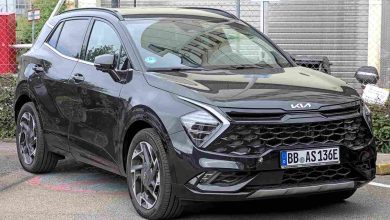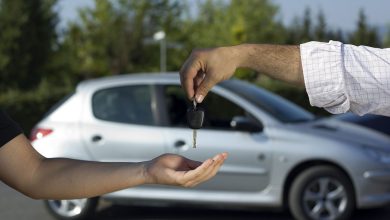What to Do When Your Car Overheats

The temperature in your car’s engine area can reach over 200 degrees Fahrenheit during the year’s hottest months. In such situations, it’s vital to keep your engine cool. In most circumstances, your car’s cooling system is more than adequate. If the needle on your temperature gauge climbs or you see steam coming from under the hood, your automobile may be overheating. If your Car overheats frequently, there could be an issue with the fan, radiator, thermostat, water pumps, hoses, or coolant.
When your engine overheats, these are the steps to take:
Stop Driving
If putting on the heater does not relieve the overheating, you should pull over and turn off the engine. This is the most efficient method for lowering the engine temperature to a safe level. At this stage, you should also call for roadside help. Roadside assistance is provided as part of your Vehicle Protection coverage. This is the standard level of protection offered by most vehicle insurance carriers. free car valuation uk
Be patient.
If you don’t have roadside help, the best thing you can do is wait. After turning off your vehicle’s engine, wait at least 15 minutes before doing anything with it. You’re putting yourself in danger if you open the hood. Even though the coolant is squirting out of the cooling system, it could exceed 230 degrees.
Turn on the heater.
The heat from the engine is transported to the cabin, conserving energy. He believes that in some situations, overheating can be reversed. An off-or-neutral temperature gauge or a flashing warning light indicates that it’s working. Buy Automotive parts online
Pullover
Stop and turn off the engine if your car continues to overheat after a few minutes of driving with the heater on. If you have roadside assistance, it will be best.
Sit tight.
“The hood, engine, and coolant must cool for 15 minutes.” If you don’t have roadside assistance, let the engine cool for 15 minutes. Don’t open the hood of an overheated car with 230-degree coolant. If you open the hood, hot water or steam may shower you. “Safety is paramount,”
Add coolant
Put on gloves and wait at least 15 minutes before opening the hood. Locate and open the radiator cap. With a towel, gently press down on the lid to relieve the pressure created by the coolant expanding as it heats up. After that, fully open the radiator cap and slowly pour in the coolant (half water, half antifreeze) until the fluid gauge reads “full.” The radiator overflow reservoir is filled with coolant. After that, replace the cap and restart the engine. If the thermometer or warning light returns to normal, proceed cautiously while keeping an eye on the temperature gauge or light. “
Drive to a service station
Coolant won’t help your overheating engine, but you can drive it to the shop. A mechanic must inspect your vehicle’s cooling system. While driving, watch the temperature gauge. Watch under-car fluids and steam. This primary data is crucial for a correct diagnosis.
Restart the Engine
If you’re not being towed, gently restart your engine and drive to the nearest vehicle repair shop. Keep an eye on the temperature meter while driving. If the system starts to increase again, pull it aside and let it cool.
Reasons for a Car to Overheat
Coolant levels and circulation, internal debris, a broken thermostat, radiator, or cooling fan are just a few causes of car overheating. Engine overheating is typically attributed to a lack of coolant or a fault with the vehicle’s cooling system.
Malfunctioning AC
It’s likely that an issue with the cooling system, such as a broken connection, is causing the engine to overheat. Any overheating is almost always the fault of an AC compressor or another cooling system component.
Coolant leaks or improper circulation
The coolant prevents the engine from overheating and freezing in extreme temperatures. A faulty coolant line connection might cause an engine failure due to overheating. If there is a leak, the antifreeze mixture or fluid is not circulated effectively in the engine, or the coolant level in your car is low, the engine will overheat.
Avoiding car overheating
Car park in the shade
You and your car will sense a temperature difference between being in the shade and being in the sun. When you park under a tree, it not only keeps you more relaxed but might also extend the life of your vehicle. Is there even a shady spot? Make use of a parasol to keep your vehicle cooler.
Window-tint
A dealership or auto body shop can tint your windows to keep your car cool and protect it from the sun.
Shade car windows
Window shades are an excellent idea to have on hand because you never know when you’ll find a shady parking spot. UV heat shields prevent overheating while protecting your interior from the sun’s harmful rays. You might want to consider window covers for your vehicle’s make and model. One of these sunshades can block out all of the sun’s beams.
Open the car windows a bit.
When closed windows operate as conductors, the temperature of the enclosed space rises. If you have a window, open it to allow in some fresh air into the sunroof. Make sure there isn’t a big enough gap for someone to squeeze through. If you leave your windows open all summer, remember to keep an eye on the weather because a sudden summer storm could result in a moist interior.
Add engine coolant.
This is significantly more important during the hotter months. To check the amount of coolant in the reservoir, open the hood and look for it. Indicators show the coolant level in the reservoir. If the coolant level is too low, top it up with the proper amount and replace the cap. When it comes to engine coolant, a 50/50 blend of water and coolant is standard. It’s also possible to make your own concentrated coolant.
Conclusion
Anytime there is a problem with your automobile, one of the most common problems is an overheated engine, which is also one of the easiest to fix. When dealing with an overheated engine, there is still a risk of getting burned, literally and metaphorically. If you follow the above requirements while also having a protection plan, you may only have to pay your deductible on eligible repairs.
Apart from this if you are interested to know about Purchase Used Cars Online then visit our Auto Mobil category.




